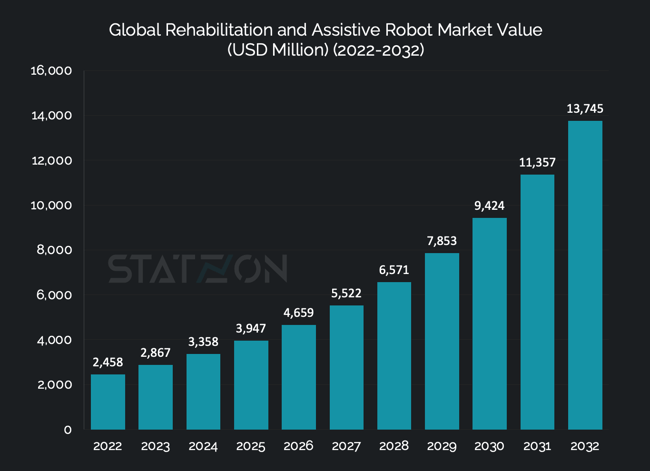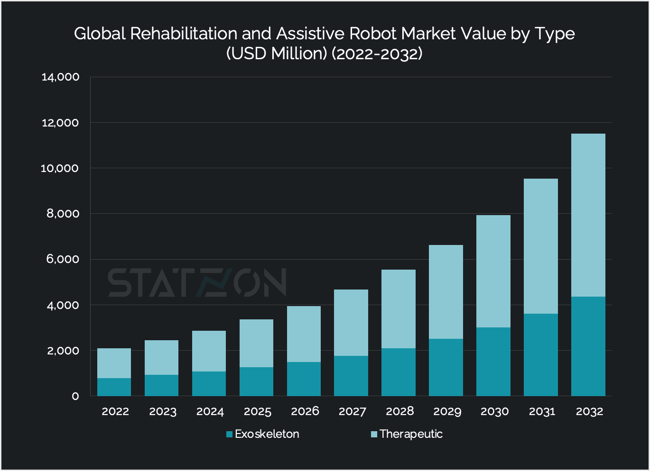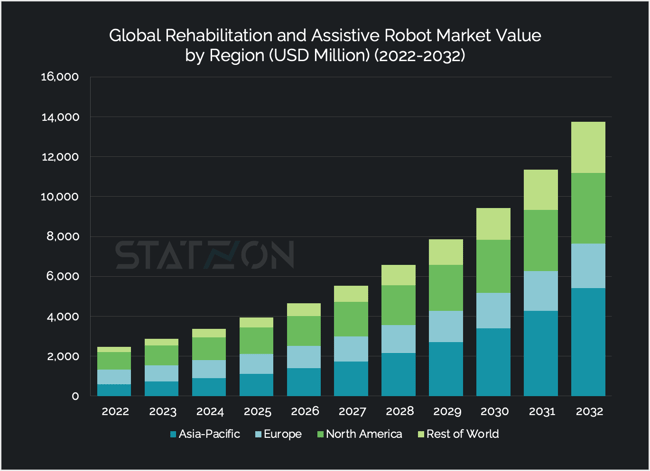How are Robots Used in Rehabilitation?
Rehabilitation robots are revolutionizing the way physical therapy and rehabilitation are conducted. These advanced robotic systems are used to facilitate and enhance the rehabilitation process for individuals recovering from injuries, surgeries, or suffering from physical disabilities. They assist in a range of motion exercises, strength training, and skill development. By providing consistent and precise assistance, these robots help patients regain mobility, strength, and function more effectively than traditional rehabilitation methods.
Where are Rehabilitation Robots Used?
Rehabilitation robots are predominantly used in various healthcare settings, including hospitals, rehabilitation centers, and increasingly in home-based care. In hospitals and clinics, they are integral in providing intensive rehabilitation therapy under the supervision of healthcare professionals. With the advancement in technology, compact and user-friendly designs are also making it possible for patients to use these robots for home-based rehabilitation, thereby extending the reach of therapeutic care beyond clinical settings.
How Rehabilitation and Assistive Robots are Helping Patients?
Robots in rehabilitation are playing a pivotal role in patient recovery and therapy. They offer several benefits:
- Precision and Customization: Robots can deliver precise and repetitive movements, which is crucial for effective therapy. They can be programmed to cater to the specific needs and limitations of each patient.
- Enhanced Engagement: Many rehabilitation robots are equipped with interactive interfaces and gaming elements, making therapy sessions more engaging and motivating for patients.
- Data Tracking and Feedback: These robots can track progress and provide real-time feedback, enabling therapists to adjust treatment plans promptly.
- Increased Accessibility: For patients with severe mobility limitations, robots can facilitate movements that might be impossible otherwise, thus enhancing their rehabilitation potential.
Global Rehabilitation and Assistive Market Size and Future Forecast
The global market for rehabilitation and assistive robots, valued at USD 2.45 billion in 2022, is on an upward trajectory, projected to reach USD 13.7 billion by 2032 with a CAGR of 18.78%. This growth is propelled by significant advancements in biomechanics and prosthesis design, as seen in high-profile events like the Beijing Paralympics, where assistive robots played a crucial role. Another example can be found in the accomplishments of athletes such as Oscar Pistorius and Markus Rehm, emphasizing how evolving assistive technologies are not only improving human performance but also fostering greater social inclusion.
Collaborative efforts among engineering, clinical, therapeutic, and medical device manufacturing communities are crucial for advancing musculoskeletal morphology, perception, and neural control understanding. These collaborations will lead to improvements in the design of smart, economical, and biologically integrated assistive and rehabilitation devices.
Types of Rehabilitative and Assistive Robots: Exoskeleton and Therapeutic Robots
Therapeutic robots, which account for about 53% of the market with a 2022 value of USD 1.3 billion, are also witnessing substantial growth. Growing at an 18.48% CAGR, they are expected to reach USD 7.1 billion by 2032. These robots play a vital role in providing therapy for both physical and cognitive development, augmenting physical and social interaction for patients. The advancements in therapeutic robots, coupled with the growth in exoskeletons, highlight the dynamic and evolving nature of the rehabilitation and assistive robots market.
Exoskeletons, on the other hand, play a crucial role in musculoskeletal function recovery by offering enhanced mobility. This segment is witnessing rapid advancements through innovations such as assist-as-needed controllers and Virtual Reality (VR) techniques. These developments are not only improving patient engagement but also enhancing the effects of neuroplasticity, a key factor in effective rehabilitation. The integration of AI and soft robotic technologies in this field is paving the way for a future where assistive devices go beyond compensating for disabilities. They are increasingly seen as tools to extend human capacities.
In terms of market growth, exoskeletons are showing a slightly higher CAGR of 18.61% compared to 18.48% for therapeutic robots. In 2022, the market value for exoskeletons was USD 793 million, and it is projected to reach an impressive USD 4.4 billion by 2032.

Regional Dynamics in the Rehabilitation and Assistive Robots Market
The global rehabilitation and assistive robots market exhibits diverse growth patterns across key regions, each contributing uniquely to the industry's expansion. In 2022, North America emerged as the market leader, accounting for approximately 36% of the global market share with a value of USD 877 million. This dominance is projected to continue, with the region expected to reach USD 3.5 billion by 2032, growing at a CAGR of about 15.2%. Within North America, the United States is not only the biggest market but also a global leader in the field. In 2022, the U.S. market alone was valued at USD 757 million, making up a significant portion of the North American market and about 31% of the global market. The US is expected to maintain its leading position, with projections showing growth to USD 2.9 billion by 2032.
Asia-Pacific region, holding about 24% of the market share in 2022, is witnessing the fastest growth in the market. Starting from USD 592 million in 2022, it is forecasted to surge to USD 5.4 billion by 2032, with an impressive CAGR of approximately 24.5%, the highest growth globally. This rapid growth is fueled by technological advancements, increasing healthcare investments, and a growing interest of the benefits of robotic rehabilitation in countries like China, Japan, and South Korea.
Europe, with a market value of USD 725 million in 2022, representing around 29% of the global market, is also experiencing steady growth. The European market is expected to reach USD 2.2 billion by 2032, growing at a CAGR of around 11.8%. This consistent expansion is supported by strong healthcare policies and a focus on medical technology innovation across major countries.
Rehabilitation and Assistive Robot Market Segmented by Body Part
The use of assistive and rehabilitation robots differentiated by body part ensures targeted therapy and support, catering to the specific rehabilitation requirements of different patient groups. The differentiation in the market by body part – specifically lower and upper extremity – plays a crucial role in addressing distinct rehabilitation needs. In 2022, the lower extremity segment, valued at USD 1.3 billion, constituted approximately 55% of the total market. This segment is projected to grow to USD 7.7 billion by 2032, focusing on aiding recovery and strengthening of legs and hips. These robots are crucial for patients with lower limb surgeries, injuries, or conditions like stroke, enhancing gait, balance, and mobility.
Upper extremity robots, representing about 45% of the market in 2022 with a value of USD 1.1 billion, are expected to reach USD 6 billion by 2032. They cater to the rehabilitation of arms, shoulders, and hands, vital for patients needing to regain arm functions and fine motor skills, often due to neurological conditions or injuries. Incorporating advanced technologies like haptic feedback and VR, these robots make rehabilitation more interactive, aiding in tasks from basic movements to complex object manipulation.
Source: Statzon, science.org, cell.com,



